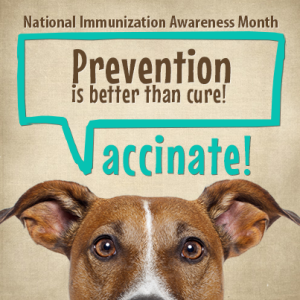Posts Tagged ‘flea and tick’
How to Choose the Right Flea and Tick Medicine for Your Dog
 With the weather being nice, people and pets are tired about being cooped up inside. They are starting to enjoy the fresh air, the calm breezes in their face and the warmth of the sun. But whether it is a walk in the park, a weekend camping along the lake or even lounging around your front yard, fleas and ticks could be waiting to latch onto your pet and hitch a ride. So because of this, application of a flea and tick control or collar is essential to prevent them from infesting your home.
With the weather being nice, people and pets are tired about being cooped up inside. They are starting to enjoy the fresh air, the calm breezes in their face and the warmth of the sun. But whether it is a walk in the park, a weekend camping along the lake or even lounging around your front yard, fleas and ticks could be waiting to latch onto your pet and hitch a ride. So because of this, application of a flea and tick control or collar is essential to prevent them from infesting your home.
There are many factors to consider when choosing the optimal product. One must decide if they want a collar, topical or chewable tablet. Each one has their pro’s and con’s about them. The collars and topical products such as Frontline or Advantage have been around a lot longer and may be less expensive to buy, but we have seen breaks in protection because the fleas and ticks have gained resistance or the product has not been used properly. Some of those products are approved by the EPA so they might not be safe to use on your pet. Recently new products such as Nexguard or Bravecto have been developed that are taken orally. Because they are newer products, the fleas and ticks have not developed a resistance to them. Also since they are ingested, they are approved by the FDA to assure their safety to the pet.
There are several oral products available like Simperica Trio that will also control other parasites, along with fleas and ticks. So they may be more expensive but be more convenient in the long run.
The best thing to do is to have a conversation with your vet about what is best for your pet, as well as what works for you financially. We are happy to have a conversation about any concerns you have. Prevention is key, so make sure to protect your furry companion this summer. Contact our offices today!
Dog Park Safety Tips
 With the pet business becoming a multi-billion dollar business in recent years, it is telling us that more and more people have pets and are taking care of them. Among the fads, if you want to call it that, are “doggy daycares”, mobile groomers and dog parks. A lot of these services are great ideas as far as convenience is concerned, but how safe are they to our pets? Especially the dog parks.
With the pet business becoming a multi-billion dollar business in recent years, it is telling us that more and more people have pets and are taking care of them. Among the fads, if you want to call it that, are “doggy daycares”, mobile groomers and dog parks. A lot of these services are great ideas as far as convenience is concerned, but how safe are they to our pets? Especially the dog parks.
No, I am not going around and saying that dog parks are bad for you dog, but there could be some hidden dangers that may be lurking for the unprotected dog. Most dog parks are public places, so there is a good possibility that not all dogs are properly vaccinated against diseases such as Parvovirus, Roundworms, or even Kennel Cough. These diseases can occur during direct contact with another dog, or even if your pet has licked an area that harbored the diseases or parasites. So my advice is to make sure that your pet is currently vaccinated for all diseases. If they’re not—do not take them there. It is not worth it to possibly expose your pets to those diseases if you can help it.
We all see the dogs being playful in the park, but how do we know that the other pets can’t become overly aggressive? Because of this, I would recommend that your pet be kept on its leash. I know that is not the reason for dog parks, but that way you can control your pet if they or another pet exhibits some aggression so that you may prevent injury and not be faced with a costly veterinary visit.
If you allow your pets to run free in the park, injuries such as torn cruciates and other lamenesses can occur. To reduce this possibility, it might help to train your pets for the rigors that a dog park presents.
Dog parks are popping up in a lot of the communities. Realize that just because they are in a fenced in environment, they are not always completely safe. If you have any questions or issues, please feel free to contact us or give us a call at 618-656-5868.
Everything You Ever Wanted To Know About Pet Vaccines
 Pet vaccines are important, and they have a long history. Probably the most important technological gains were discovered in the 1790’s by Dr. Edward Jenner. He discovered the first vaccination by giving people a preparation of material from cowpox, which was a common animal disease in cattle. The people that were injected with or “vaccinated” with the material did not get sick and remained healthy when they were exposed to the deadly smallpox virus. Over 100 years later, a French scientist by the name of Louis Pastuer, found that they could protect people and animals from disease by injecting altered forms of microorganisms.
Pet vaccines are important, and they have a long history. Probably the most important technological gains were discovered in the 1790’s by Dr. Edward Jenner. He discovered the first vaccination by giving people a preparation of material from cowpox, which was a common animal disease in cattle. The people that were injected with or “vaccinated” with the material did not get sick and remained healthy when they were exposed to the deadly smallpox virus. Over 100 years later, a French scientist by the name of Louis Pastuer, found that they could protect people and animals from disease by injecting altered forms of microorganisms.
The process of how a vaccine works is a complex reaction that involves many chemical and cellular reactions within and between the immune system cells of the body. Basically the role of the vaccine is to expose the immune system of the pet to viral and bacterial antigens that are contained in the vaccine. In the future, when the pet is exposed to that related organism, the body will recognize it and then activate the immune system to prevent the disease from producing or reducing the signs of clinical disease.
Vaccines can be administered by subcutaneous or intramuscular injections, intranasal or orally. The vaccines that are injected or given orally tend to produce a more systemic or whole body response, whereas the intranasal provides a more local response. Intranasal vaccines can be advantageous to provide a quicker response and prevent or kill the new virus before it can get any further in the body. Local nasal vaccines would not be helpful for a virus that has been ingested and causes intestinal disease such as parvovirus in dogs. For that we would want a vaccine that would produce a more systemic response.
The vaccines that we use in veterinary medicine are most generally either a killed or a modified live (attenuated) vaccine. There are multiple indications for both, but generally speaking the killed vaccines are safer and unlikely to cause disease in the immunocompromised pet. Whereas, the live vaccines provide a more amplified response that leads to a better, longer lasting immune protection. Several of the vaccines that we use have many different viruses in one injection. This allows to vaccinate for several of the organisms in one injection.
To confuse you even more, pets get some protection through the placenta when the puppies and kittens are in the mother’s uterus and when they get colostrum which is the first milk that they drink. This protection will decrease over time and usually will be low enough by 12 weeks of age where vaccinations will start reacting. There is no way to measure quick, easy and inexpensive way to measure the immunity gained here, so we generally recommend starting vaccines at 6 to 8 weeks of age and then booster them every 2 to 4 weeks until they are 16 weeks of age. Generally, it is not the number of vaccinations that they get, but when they get them at their chronological age.
A vaccine helps prime an animal against a specific disease. It does this by stimulating the immune system with a nonpathogenic virus or bacteria. If the animal responds adequately, it will develop cells that will help it to quickly and efficiently fight off the pathogenic form of the agent if it is encountered later. Here at Olsen Veterinary Clinic, we have tailored our vaccination programs to meet the needs of your pet. If you have any questions please feel free to contact us here, or call our office at 618-656-5868.
Summer Dangers For Pets
 Oh the dog days of summer. What’s not to like about summer? Vacations, cookouts, swimming—can it get any better than that? Wait a dog gone minute though. These fun times can be hazardous to your pets, so care must be taken to make sure that they don’t succumb to the dangers that can be lurking. Accidents can happen almost anytime and anyplace so it is important to be aware of how to prevent them from happening. These can include but not be limited to heat stroke, swimming pools, venomous pests, campouts, bbq and other foods just to name a few. So let’s cover a few dangers to avoid and try to prevent.
Oh the dog days of summer. What’s not to like about summer? Vacations, cookouts, swimming—can it get any better than that? Wait a dog gone minute though. These fun times can be hazardous to your pets, so care must be taken to make sure that they don’t succumb to the dangers that can be lurking. Accidents can happen almost anytime and anyplace so it is important to be aware of how to prevent them from happening. These can include but not be limited to heat stroke, swimming pools, venomous pests, campouts, bbq and other foods just to name a few. So let’s cover a few dangers to avoid and try to prevent.
Summer Heat
The summer heat can be dangerous to our pets. Dogs are covered with hair, have very few sweat glands, and some breeds have shortened noses that make it tough to keep cool in the summer. So the easiest way to beat the heat is to adjust your walking schedule to the morning hours when it is cooler out. Some dogs may do well with having their haircoat shaved, however breeds like the Husky have a haircoat that also helps keep them cool in the summer.
The heat will also warm up the inside of your car, so if it is above 65 degrees either leave your pet at home or take it inside with you when you leave the vehicle.
Sunburn can also cause some problems, so it may be important to put sunscreen on the pets ears and bare skin to prevent this.
Swimming Pools
What is a better way to beat the heat than swim in a swimming pool? It is great and it also is a good way for your dog to get exercise. Floatation devices are available to assist the pets that are not strong swimmers. But, do not leave them unsupervised. It is important that they be taught how to exit the pool safely before they tire. Also having fresh water for them to cool off with and to remove the chlorine, salt and bacteria that can be harmful to them is beneficial. So keep a bowl handy by the pool.
Fireworks
Almost everyone celebrates the Fourth of July with fireworks. Dogs tend to not like loud noises and can be scared easily. The best advice would be to leave your pets at home inside and away from the flash of the fireworks.
BBQs
Some summer evenings are spent socializing with friends and barbecuing. We all like them, and even our pets are hoping for a few table scraps. A little of this and a little of that can be bad for pets—and not just their waistlines. Some surprising foods like grapes, onions, garlic and raisins, can be toxic to dogs if consumed in large quantities and should stay off their menu. Other barbecue staples like corn on the cob, bones, fruit with pits, skewers or ice cream can be dangerous to our four-legged family members. It may be helpful to talk to guests and children before summer parties and politely remind them that table food could be detrimental to the health of your pet.
Fleas & Ticks
While our the heat puts a strain on our pets, fleas and ticks thrive during this time. They can cause disease and carry other parasites that are detrimental to the health of our pets. Just like humans, pets can have allergic reactions to insect and spider bites. By grooming your pet frequently, you can check for the presence of the pests, hot spots, and other skin problems that can be caused by these pests. There are some very good flea and tick medications out there to prevent the problems before they start, so talk with your veterinarian to see what they would suggest. You can also order directly from our store.
Heartworms
Heartworms are carried by mosquitos, and the summer months are when mosquitos thrive and pose the greatest threat to your pet. The heartworms can be very dangerous to the health of your pet. It is best to have your pet on a medication to prevent your pet from contracting the painful disease. So ask your veterinarian for their recommendations.
These dangers may sound scary, but a little preparation and watchful eye is all you need to take the heat off your summer. If you have any questions, please don’t hesitate to call the Olsen Veterinary Clinic at 618-656-5868, or contact us here.
Parasite Prevention And Your Pet
 Parasite prevention and your pet is something very important. With summer fast approaching, pet owners are more active with their pets outside. That is where you will find parasites that can infest your pets, several of which can infect people as well. So because of this, parasite prevention is not only important for the health of your pet but also for the health of your family.
Parasite prevention and your pet is something very important. With summer fast approaching, pet owners are more active with their pets outside. That is where you will find parasites that can infest your pets, several of which can infect people as well. So because of this, parasite prevention is not only important for the health of your pet but also for the health of your family.
As a veterinarian, we generally talk about controlling and preventing four major parasite groups—Fleas and Ticks, Intestinal Parasites, and Heartworms.
Fleas and Ticks
Fleas and ticks are troublesome parasites of the skin. Not only are they troublesome because they cause problems with the skin, they also transmit several diseases to your pet. There are many effective products out there that can be purchased from your veterinarian to control and prevent flea and tick infestations. Regular use of these products can prevent fleas and ticks from becoming a problem to your pet. As tempting as it might be to purchase an over the counter product from your pet store or big box store, I would caution you as a pet owner to be very careful. Many of these products can have serious side effects if used improperly and may have limited effectiveness.
Intestinal Parasites
Intestinal parasites can cause pets to vomit, have diarrhea, lose weight, and lead to a poor overall condition of your pet. The most common intestinal parasites in cats and dogs are roundworms, hookworms, whipworms, tapeworms and coccidia. All of these parasites can have the ability to affect your pet. Additionally, some roundworms, hookworms, and some tapeworms can also affect humans. Because of this, pet owners should contact their veterinarian to check on a routine testing schedule and monthly preventatives.
Most parasites cannot be seen with the naked eye in the feces. Your veterinarian can diagnose the infestation by taking a sample of the feces and looking at it under a microscope. The Companion Animal Parasite Council recommends that a fecal analysis be performed 2 to 4 times during a pets first year of life and at least 1 to 2 times per year for adults.
Because your pet can get exposed to intestinal parasites at birth and an early age of life, the CAPC recommends that puppies and kittens should be dewormed every 2 to 3 weeks until they are 12 weeks old and animals that are older should be dewormed at least twice. Once the initial deworming is complete, dogs and cats should be put on a monthly, year-round product that prevents intestinal parasites as well as heartworm infections.
The area where your pet eliminates can become contaminated with intestinal parasite eggs. This can cause reinfection to your pet or exposure and infection of future pets or humans. Immediate removal of the feces from the yard greatly reduces the chance that the property will become contaminated with the intestinal parasite.
Heartworms
Heartworms are a parasite that resides in the heart and is transmitted through the bite of a mosquito. This mosquito is harboring the larva of the heartworm and it is injected with the saliva into the bloodstream of the dog. The larva migrate to the heart where they mature and become adults. Over time, heartworms can cause exercise intolerance, heart failure and respiratory problems in dog. Fortunately, heartworms are preventable. There are several fantastic monthly preventative options available through your veterinarian. When given year-round, these products will provide protection against heartworms and several other intestinal parasites and fleas that can infect dogs, cats and people. Your vet would be a good source to help you decide which product is best for you and your pet.
Here at the Olsen Veterinary Clinic we carry products to protect your pets. Stop in or give us a call and we would help you decide what is best. You are always welcome to contact us here with questions.
Get Your Pets Immunized!
 August is National Immunization Awareness Month. This observance offers the opportunity to remind the community of the importance of immunization to prevent disease. Each year thousands of pets succumb to diseases that could be preventable by vaccinations.
August is National Immunization Awareness Month. This observance offers the opportunity to remind the community of the importance of immunization to prevent disease. Each year thousands of pets succumb to diseases that could be preventable by vaccinations.
Giving your pet regular vaccinations is the secret to a healthy pet’s life. Vaccines now cover multiple diseases like DHLPP in dogs and FVCRP in cats. These diseases can cause illness in your pet so it is important to vaccinate to reduce the risk and protect the health of your pet. Other diseases that can be vaccinated against include Bordetella which is a upper respiratory disease in dogs and Lyme disease which affects the joints of your dog.
Not only is it important to vaccinate your pet against those diseases, it is of utmost importance to vaccinate your pet against rabies. Rabies is a disease that can be transmitted to humans. This disease is capable of paralyzing the nervous system in your pet and can be spread through saliva. Rabies is preventable by vaccinating against it. The rabies virus is a fast moving virus, so if your pet is not treated soon after the symptoms appear, the prognosis is very poor. So, if your pet has been bitten by, been in a fight, or in contact with a rabid animal, it is my recommendation that you take your pet to your veterinarian for preventative care immediately
There are many symptoms to watch for in your pets. These include seizures, paralysis, difficulty swallowing, lack of muscular coordination, aggression and excessive excitability. There are now 1 year and 3 year vaccinations that are more effective and convenient. Always make sure your pets’ rabies vaccine is up to date.
In addition to rabies is protecting your pet from fleas and ticks. With the recent warm weather and the advent of summer, it is important to be aware of the diseases that can be spread by the insect and arthropod vectors like the mosquito, tick and flea. These three parasites carry a lot of diseases that not only affect your pet but also can cause sickness in you.
The mosquito-borne diseases which are spread by a bite from a mosquito include Heartworm Disease, Encephalitis, West Nile, and Yellow Fever. Heartworm disease can be fatal to dogs if left untreated, but it is easier to prevent it than treat it. The other diseases can affect humans as well with clinical signs ranging from fever to headaches to even death.
Feel free to contact us at our office to make sure that your pet is up-to-date with its vaccinations. It can be a matter of life or death.
Preventing Tick-Borne Disease
 Ticks are a world-wide problem. They carry several diseases that can threaten the health of your dog. Such diseases include Ehrlichia, Anaplasma, Rocky Mountain Spotted Fever, and Lyme Disease. These diseases present us with different symptoms and most are difficult to diagnose in the early stages without aggressive diagnostic testing and prompt treatment. Depending on the disease, we can be presented with clinical signs that include lethargy, neurological deficits, deficiencies of all blood elements, high fever, arthritic pain, kidney failure, paralysis, and ultimately death. Early diagnosis and proper treatment is essential for positive outcomes.
Ticks are a world-wide problem. They carry several diseases that can threaten the health of your dog. Such diseases include Ehrlichia, Anaplasma, Rocky Mountain Spotted Fever, and Lyme Disease. These diseases present us with different symptoms and most are difficult to diagnose in the early stages without aggressive diagnostic testing and prompt treatment. Depending on the disease, we can be presented with clinical signs that include lethargy, neurological deficits, deficiencies of all blood elements, high fever, arthritic pain, kidney failure, paralysis, and ultimately death. Early diagnosis and proper treatment is essential for positive outcomes.
In order to prevent tick infestations, we must first understand the ticks environment and life cycle. Environmental prevention is based on what we know about the tick, which seems to be geared toward only two things, reproduction and survival, both of which depend on blood.
An adult female tick gets impregnated by a much smaller male and then engorges itself on the blood of an animal, it falls off and dies after laying a batch of eggs that may number in the thousands. The tiny, six-legged larvae that emerge from the eggs do not all survive, but the ones that do attach themselves for their first blood meal on small mammals like field mice. This is where the trouble can start for dogs if that mouse is a carrier-host for tick-borne disease since ticks are usually not born infected.
After feeding, the larvae molt, become nymphs and gain another pair of legs and the chance to become a carrier if the larger animal they feed on has a tick borne disease or pass infection on if they are already a vector from feeding on the small mammal.
Most ticks will climb on a grass blade or low-hanging tree branch and wait for your pet to come along, holding up their front legs in anticipation of grabbing hold. The ticks have chemoreceptors in sensory organs that act as taste buds on their front legs that they use to find their next meal. They know us by the carbon dioxide that the dogs and we breathe out, moisture, body heat and butyric acid which is a chemical that all mammals give off. So when a dog brushes by a tick, it will latch onto its fur and start looking for a place to attach and feed.
Not all ticks carry disease, but because of the numbers that exist makes sense to do everything possible to protect our dogs from being bitten. The way the tick behaves gives us clues how to keep the ticks away.
Obviously, since ticks like tall grasses and low-hanging tree limbs, it is best to cut the grass and remove the branches. It is also good to keep dogs away from areas where there could be small rodents such as stone walls and wood piles.
You can also spray the surroundings with a mild dish soap like Ivory with a garden sprayer. This detergent will also kill the honey bees, so do this in the evening when they are not around. Ticks do not like sulfur because of the pungent odor to their sensory organs.
There are several preventatives that are on the market that prevent ticks. Most of the good ones contain Amitraz. But do not use the products that contain Amitraz and permethrin on cats because they are toxic to them. Frontline Plus which is made by Merial contains Fipronil which is safe for cats.
The only tick-borne disease that has a vaccine available for prevention is Lyme disease. It works best in young dogs that have never been exposed before and must be given every year. Dogs have been known to get Lyme even though they have been vaccinated. Most veterinary teaching hospitals do not recommend it unless you live in an area where there is a strong likelihood of infection. The ease with which Lyme can be detected and treated may weigh against using the vaccine. Very rarely, dogs can have a reaction to the vaccine which leaves them with all the painful symptoms of Lyme disease but no hope of being cured as there is no disease to fight. Unfortunately, you cannot know if yours will be one of them before you vaccinate. However, many have been vaccinated and suffered no serious reaction and appear to be protected by the vaccine.
The best and safest way to remove a tick is to use a small curved Kelly forceps or a pair of tweezers or one of the tools especially made for the purpose, catch the tick right behind the flattened head as close as possible to the dog’s skin, and pull gently and straight out. Do not ever try to remove a tick with your fingers, burn it, put petrolatum jelly on it, twist it or jerk it. By grasping the tick with your fingers, you risk propelling the infectious saliva from the tick into your dog. After removing the tick drop it in a solution of water and dish soap to kill it.
